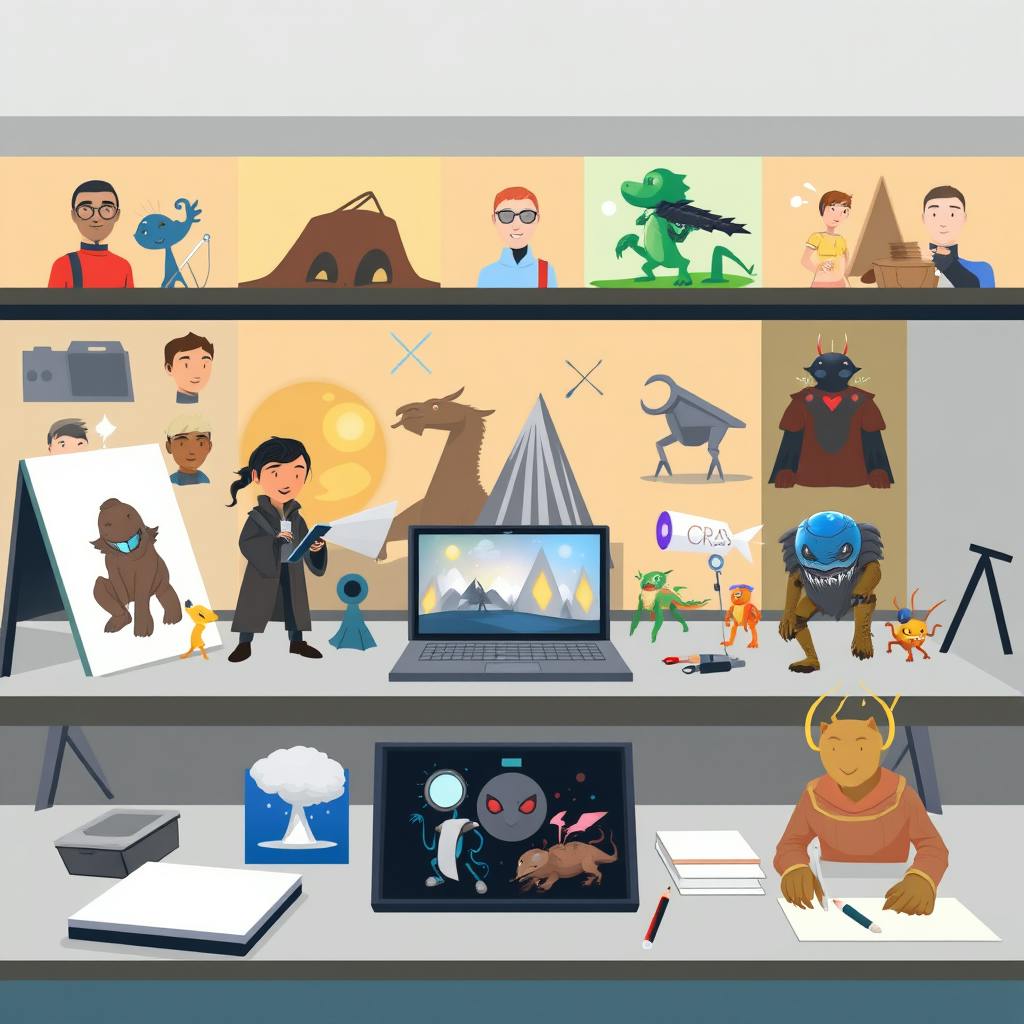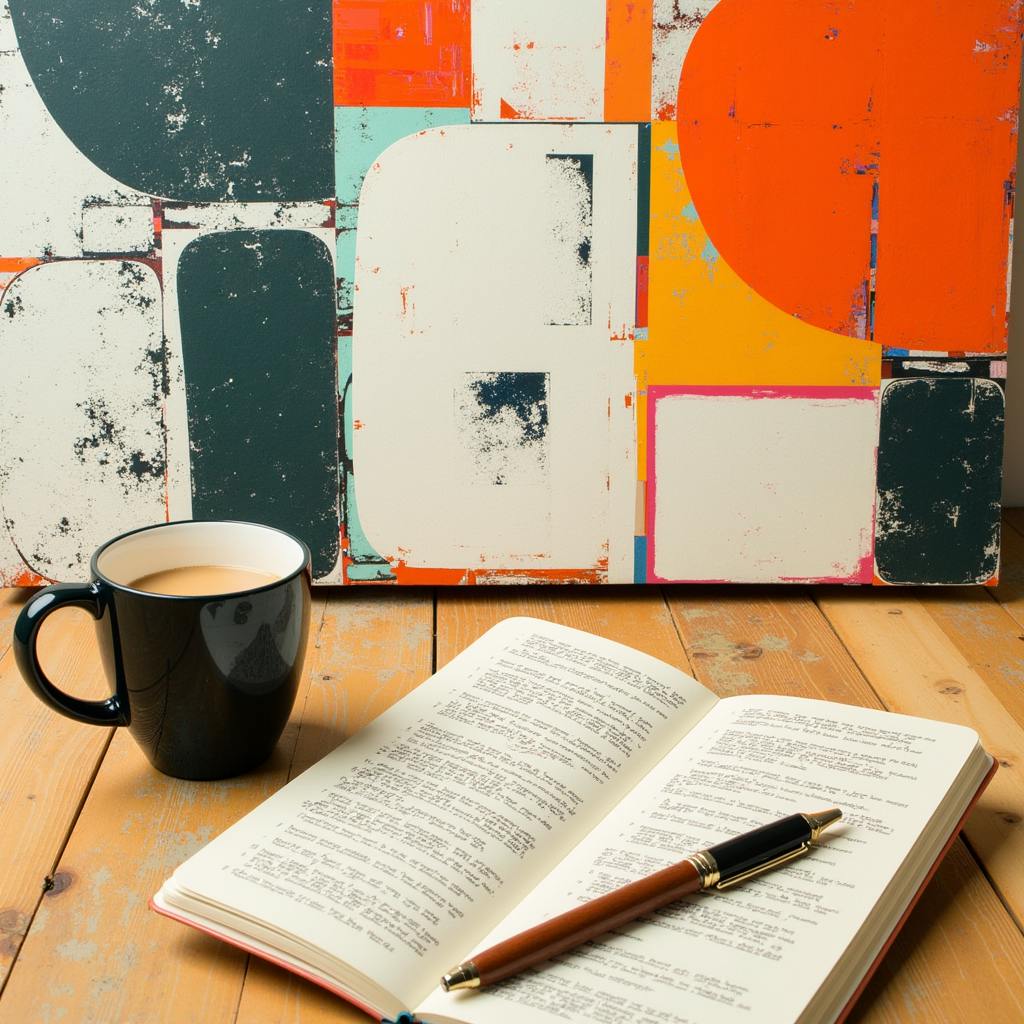A concept artist portfolio is your golden ticket to stand out and get noticed by potential employers, collaborators, and clients. Whether you're aiming to work in gaming, film, or animation, having a portfolio for visual artists is essential in demonstrating your unique artistic voice and technical prowess. In this article, we will explore the essential components of a successful concept art showcase, discussing who should build one, what it should contain, when and where to present it, why it's crucial, and how to create one that captures attention and leaves a lasting impression.
Who Needs a Concept Artist Portfolio?
A concept artist portfolio is vital for anyone looking to break into industries such as gaming, animation, film, or any field that requires visual storytelling. If you're a student, recent graduate, or a self-taught artist aspiring to secure a position in a creative team or freelance opportunities, this portfolio acts as your personal marketing tool, showcasing your skills and creativity.
What Should a Concept Artist Portfolio Include?
A well-rounded digital art portfolio should feature a variety of work that highlights your competencies in different areas:
- Character Design Portfolio: Include a range of character sketches and finalized designs that demonstrate your ability to convey personality and emotion.
- Environment Designs: Display your expertise in creating immersive and believable worlds that capture the viewer's imagination.
- Prop and Vehicle Designs: Show your ability to design intricate and functional assets that contribute to storytelling.
- Process and Iteration: Include concept sketches, mood boards, and thumbnails to illustrate your creative process and problem-solving skills.
- Finished Pieces and Client Work: Highlight pieces that have been taken through to completion and, if applicable, any client work, ensuring you have permission to share it.

AI made with Rita Lux
When and Where Should You Present Your Portfolio?
Timing and location matter. Present your creative portfolio for artists at strategic moments such as:
- Job Applications: Tailor the content to match the specific role you're applying for.
- Art Competitions: Entering your work in contests can both boost visibility and provide networking opportunities.
- Online and Social Media: Platforms like ArtStation, DeviantArt, Behance, and even Instagram serve as great spaces to showcase your work to a global audience.
- In-Person Interviews and Networking Events: Keep a physical copy or a well-organized PDF on a tablet ready to share.
Why Is a Concept Artist Portfolio Important?
The concept artist portfolio is not just a collection of your best work; it's a narrative that communicates your artistic journey, versatility, and vision. It's crucial for:
- Making a First Impression: Potential employers and clients will often make initial hiring decisions based on the strength of your portfolio.
- Showcasing Growth and Adaptability: Your portfolio should reflect your evolving skills and style, demonstrating your capacity for creative growth.
- Building Credibility: A strong portfolio establishes you as a serious artist and opens the door to professional opportunities.
How to Build an Impressive Concept Artist Portfolio?
- Research and Gather Inspiration: Examine portfolios from artists in your desired industry to understand what stands out.
- Select Your Best Work: Quality over quantity is key. Select pieces that represent your strengths and align with your career goals.
- Organize Thoughtfully: Arrange your work to tell a coherent story. Start with your strongest pieces to grab attention immediately.
- Seek Feedback: Get constructive criticism from peers or mentors to fine-tune your presentation.
- Regular Updates: Keep your portfolio current by continually adding new pieces and removing outdated ones.
- Invest in Presentation: Good presentation matters. Use consistent formatting and consider hiring a professional to help polish your digital layout if necessary.
Concept Artist Portfolio: FAQ
What are the key elements to include in a concept artist portfolio?
A well-rounded concept artist portfolio should include several key elements to effectively showcase your skills and versatility:
- Diverse Range of Work: Include a variety of projects that demonstrate your ability to design characters, environments, props, and vehicles. Diverse work shows you can handle different aspects of concept art.
- High-Quality Images: Ensure your images are high-resolution. Low-quality images can make brilliant work look subpar. Clean, crisp, and professional presentation is key.
- Sketches and Finished Pieces: Start with your finished, polished pieces but also include some sketches or work-in-progress images. This helps potential employers see your thought process and versatility.
- Strong Personal Style: While versatility is important, having a recognizable personal style can help you stand out. Include pieces that represent your unique voice as an artist.
- Narrative Art: Concept art often involves storytelling. Include pieces that tell a story or evoke a specific emotion or mood. This can demonstrate your ability to contribute to the narrative aspect of projects.
- Professional Presentation: The overall layout of your portfolio should be clean and professional. Online portfolios should be easy to navigate, while physical ones should be organized and durable.
- Contact Information: Don’t forget to include your contact details, LinkedIn profile link, and any other professional social media links you want to share.
How can I make my concept artist portfolio impressive?
- Tailor Your Portfolio to the Job: Customize your portfolio to align with the type of work you’re applying for. Research the company and incorporate relevant work.
- Highlight Your Best Work: Lead with your strongest pieces to capture attention immediately. Only include work that showcases your best abilities and is relevant to the industry or company.
- Consistent Quality: Maintain a high standard across all pieces. It’s better to have fewer high-quality works than to include everything you've ever created.
- Focus on Fundamentals: Ensure the basics of good art, such as composition, color theory, and perspective, are consistently strong.
- Update Regularly: Keep your portfolio current with your latest and most relevant work. This shows that you’re actively engaged in your craft and continuously improving.
- Interactive or Dynamic Elements: For an online portfolio, consider using multimedia elements like short process videos or interactive galleries to engage potential clients or employers.

AI made with Rita Lux
What are the common mistakes to avoid when building a concept artist portfolio?
- Too Much Quantity Over Quality: Ensuring every piece is of exceptional quality is more impressive than overwhelming the viewer with less-polished work.
- Lack of Focus: A scattered portfolio without a clear specialization can make you seem unfocused. Make sure there is a thematic or stylistic coherence to your work.
- Ignoring the Technical Details: Spelling errors, poorly scanned images, or broken links in your portfolio can signal carelessness.
- Not Providing Context: Each piece should have a brief description that provides context, such as the project's purpose, constraints, or any concept details.
- Unprofessional Presentation: Ensure both your online and physical portfolio presentation is neat, professional, and visually appealing.
How can I showcase my skills and creativity in a concept artist portfolio?
- Show Process and Iteration: Include sketches, thumbnails, and ideation phases to show how you develop your ideas and how versatile you are in problem-solving.
- Use Personal Projects: If you lack professional experience, personal projects can be a great way to showcase your skills and creativity. Choose projects that challenge you and align with industry trends.
- Incorporate Variety: Present different styles, themes, and moods to show you can work in multiple settings and aren’t confined to a single approach.
- Detail and Complexity: Demonstrate your attention to detail and ability to handle complex compositions or concepts within your pieces.
- Tailored Narratives: Create art that tells a story, whether through character design, landscape storytelling, or thematic pieces that show a narrative depth.
- Engage with Trends: Display pieces that engage with or reinterpret current industry trends to show you are current and adaptable to market demands.
Building a strong concept artist portfolio requires both strategic planning and showcasing your innate artistry. By incorporating these insights, you can create a portfolio that not only captures your skills but also resonates well with industry standards.
Conclusion
Building an impressive concept artist portfolio is an ongoing process that requires thoughtful curation, strategic presentation, and a deep understanding of your personal artistic narrative. It is your creative self-portrait, encapsulating your skills, creativity, and potential. Remember that a concept artist portfolio is not just an obligation—it’s an opportunity to connect, inspire, and propel your career to new heights. As you embark on crafting or refining your portfolio, let it be a genuine reflection of your journey and aspirations as an artist.

